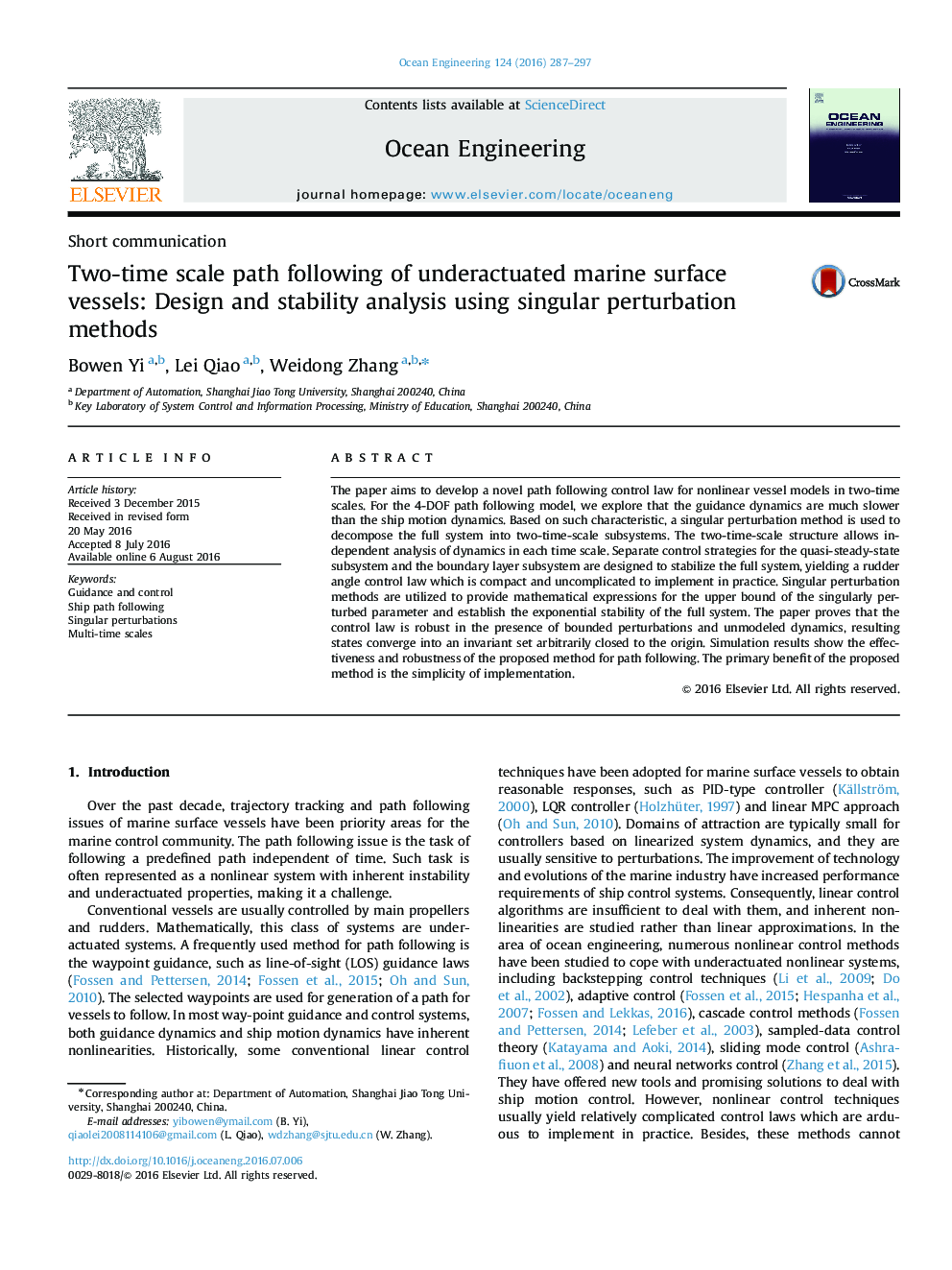| Article ID | Journal | Published Year | Pages | File Type |
|---|---|---|---|---|
| 1724981 | Ocean Engineering | 2016 | 11 Pages |
•The dynamics of path following for vessels are reformulated into a singularly perturbed model.•The system is decomposed into two-time scale subsystems.•A novel path following control law of marine surface vessel is developed using singular perturbation methods.•The proposed controller is compact for application, and the system has good performance in the presence of perturbations.
The paper aims to develop a novel path following control law for nonlinear vessel models in two-time scales. For the 4-DOF path following model, we explore that the guidance dynamics are much slower than the ship motion dynamics. Based on such characteristic, a singular perturbation method is used to decompose the full system into two-time-scale subsystems. The two-time-scale structure allows independent analysis of dynamics in each time scale. Separate control strategies for the quasi-steady-state subsystem and the boundary layer subsystem are designed to stabilize the full system, yielding a rudder angle control law which is compact and uncomplicated to implement in practice. Singular perturbation methods are utilized to provide mathematical expressions for the upper bound of the singularly perturbed parameter and establish the exponential stability of the full system. The paper proves that the control law is robust in the presence of bounded perturbations and unmodeled dynamics, resulting states converge into an invariant set arbitrarily closed to the origin. Simulation results show the effectiveness and robustness of the proposed method for path following. The primary benefit of the proposed method is the simplicity of implementation.
